
Publisher:
Bonnie King
CONTACT:
Newsroom@Salem-news.com
Advertising:
Adsales@Salem-news.com

~Truth~
~Justice~
~Peace~
TJP
Jun-07-2011 14:17

 TweetFollow @OregonNews
TweetFollow @OregonNews
Conscious Peace: World Peace Depends upon Our Collective Consciousness
Dr. William T. Hathaway Salem-News.comFrom the Book: RADICAL PEACE: People Refusing War published by Trine Day.
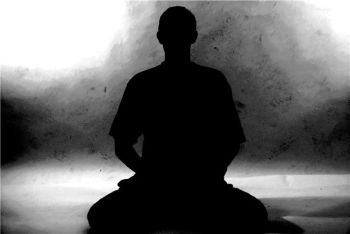 Image courtesy: nextninetyyoga.blogspot.com |
(OLDENBURG, Germany) - I was sitting in full lotus, body wrapped in a blanket, mind rapt in deep stillness, breathing lightly, wisps of air curling into the infinite space behind my closed eyes. My mantra had gone beyond sound to become a pulse of light in an emptiness that contained everything.
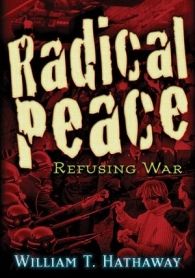 Visit: trineday to order a copy. |
An electric shock flashed down my spine and through my body. My head snapped back, limbs jerked, a cry burst from my throat. Every muscle in my body contracted ― neck rigid, jaws clenched, forehead tight. Bolts of pain shot through me in all directions, then drew together in my chest. Heart attack! I thought. I managed to lie down, then noticed I wasn't breathing ― maybe I was already dead. I groaned and gulped a huge breath, which stirred a whirl of thoughts and images.
Vietnam again: Rotor wind from a hovering helicopter flails the water of a rice paddy while farmers run frantically for cover. Points of fire spark out from a bamboo grove to become dopplered whines past my ears. A plane dives on the grove to release a bomb which tumbles end over end and bursts into an orange globe of napalm. A man in my arms shakes in spasms as his chest gushes blood.
I held my head and tried to force the images out, but the montage of scenes flowed on, needing release. I could only lie there under a torrent of grief, regret, terror, and guilt. My chest felt like it was caving in under the pressure. I clung to my mantra like a lifeline to sanity. I was breathing in short, shallow gasps, but gradually my breath slowed and deepened, the feelings became less gripping, and I reoriented back into the here and now: my small room in Spain on a Transcendental Meditation teacher training course.
I lay on my narrow bed stunned by this flashback from four years ago when I'd been a Green Beret in Vietnam. I had thought I'd left all that behind, but here it was again.
 |
I sat up and was able to do some yoga exercises but couldn't meditate. Instead I took a walk on the beach. For the rest of that day and the next I was confused and irritable and could hardly meditate or sleep. But the following day I felt lightened and relieved, purged of a load of trauma, and my meditations were clear. My anxiety about the war was much less; the violence was in the past, not raging right now in my head.
Gradually I became aware of a delicate joy permeating not just me but also my surroundings. I knew somehow it had always been there, inhering deep in everything, but my stress had been blocking my perception of it. I felt closer to the other people on the course, connected by a shared consciousness. Then I started feeling closer to everything around me; birds and grass, even rocks and water were basically the same as me. Our surface separations were an illusion; essentially we were all one consciousness expressing itself in different forms. Rather than being just an isolated individual, I knew I was united with the universe, joined in a field of felicity. This perception faded after a few days, but it gave me a glimpse of what enlightenment must be like.
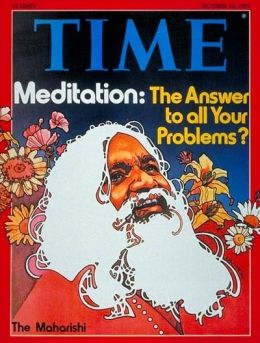
The whole experience was a dramatic example of what Maharishi Mahesh Yogi called "unstressing," the nervous system's purging itself of blockages caused by our past actions. Since my past actions had been extreme, the healing process was also extreme.
I had begun meditating in 1968, several months after returning from the war. I'd come back laden with fear and anger, but I had denied those emotions, burying them under an "I'm all right, Jack," attitude. I was tough, I could take it, I was a survivor. Within certain parameters I could function well, but when my superficial control broke down, I would fall into self-destructive depressions. I finally had to admit I was carrying a huge burden of stress, and I knew I had to get rid of that before I could live at peace with myself or anyone else.
My best friend from Special Forces, Keith Parker, had started doing Transcendental Meditation and said it made his mind clear and calm. I tried it and found he was right. When I meditated, I sat with eyes closed and thought a mantra, a sound without meaning that took my mind to quieter, finer levels and eventually beyond all mental activity to deep silence. Subjectively, TM was like diving down through an inner ocean into a realm of serenity. The effects were more real than anything I'd experienced through prayer or psychedelics. My stress and pressure began to be relieved.
I started going on World Peace Assemblies, large courses led by Maharishi or one of his assistants where we meditated as a group. This strengthened the effects, making me feel both tranquil and energized. Then I attended this four-month course to learn to be a teacher of Transcendental Meditation. Every day we did hours of "rounding," repeating cycles of meditation, yoga asanas, and breathing exercises, each taking us deeper towards transcendental consciousness. Afternoons and evenings Maharishi would answer questions and teach us how to be teachers of meditation.
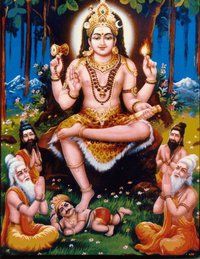
One of his favorite topics was the connection between modern science and Vedic science. After getting a master's degree in physics, he had studied metaphysics with one of the great swamis of India, so he could integrate both worlds. He taught us how the unified field that physics has discovered is the same as our own consciousness, that the fundamental level of the universe is the fundamental level of ourselves. And most importantly, he taught us how to experience this unity, where the duality of subject and object disappears and separation merges into oneness. This is the source of creation, a realm of bliss where even the concept of enemy doesn't exist. It's the level from which energy manifests into matter and form. Enlightened people live there all the time, but all of us can experience it, and once we do, our reality is different.
Ordinarily, our awareness is directed via sense perception outwards to physical objects. When we meditate, we reverse this direction and move our awareness back towards its source, the unified field. The mind goes inward and perceives progressively more refined levels of thinking until all thoughts drop away and we reach the ground state of transcendental consciousness, in which the mind is alert but without thoughts, pure awareness without an object. In place of thoughts, we are filled with a joy that can only be described as divine. Here we are united with all of creation. We are no longer observing the universe; we are the universe.
The path to transcendental consciousness, however, is not always smooth. Our stresses ― the inner effects of past actions ― can make our mind murky and unsettled, thus blocking us off from a clear experience of the transcendent. But stress can be healed. During Transcendental Meditation the nervous system repairs itself and removes the obstructions so that our awareness isn't confined to the surface thinking level but can flow into the silent depths, providing deep rest for the mind and body. In this physiological condition, stress is cured and higher states of consciousness experienced.
 |
The process can be unsettling because as stresses are dissolved, some of their qualities may affect our awareness in the form of physical pain, old buried emotions, or hectic streams of thoughts. Sometimes the unconscious has to be made conscious before it can be healed. I'd had a first-hand experience of this sort of unstressing, and it cleared away my war trauma. I haven't had a flashback in all the years since then, but I've had many experiences of the blissful unity that came afterwards.
The deep calm of meditation is more than just a subjective experience. Physiological research has shown that during TM oxygen consumption decreases twice as much as it does during deep sleep. Brain waves become more coherent, changing from the usual scattered, disordered patterns into synchronized waves coordinating across both hemispheres, an indication of more integrated mental functioning. Blood flow to the brain increases. On the skin, electrical conductance decreases, a sign of relaxation. In the blood stream, the stress hormone cortisol decreases; serotonin, a neurotransmitter that relieves depression and promotes well being, increases; arginine vasopressin, a hormone that regulates blood pressure and improves memory and learning ability, increases; blood lactate level decreases, indicating lessened anxiety. And rather than being in a trance, the person is fully alert and aware of the surroundings. This physiological condition defines a fourth state of consciousness distinct from the three usual states of waking, dreaming, and deep sleep. In this rejuvenating transcendental consciousness, the physiology repairs the damage done by traumatic events and illnesses.
More than anything else I've experienced, Transcendental Meditation creates a peaceful inner change. The personality and basic self remain the same, but fear and hostility diminish. We become friendlier to ourselves, and so we can be friendlier to others. As our personal stresses are healed, the mind functions better and we gain access to more of our mental potential. We're more able to perceive and correct the sources of social stress that surround us.
Recent research has shown that the effects don't stop with the individual. Large groups of people meditating together produce coherence and stability not just in themselves but also in the society around them. This extended effect has been demonstrated in experiments in Massachusetts, Rhode Island, Iowa, Washington DC, New Delhi, Manila, Puerto Rico, Nicaragua, El Salvador, Iran, and Holland where large groups met for long meditations. During every assembly, crime, violence, and accidents in the surrounding region dropped and the composite Quality of Life Index for public health, economics, and social harmony rose. All the changes were statistically highly significant. The groups of meditators improved the whole society: negativity decreased, positivity increased. After the assemblies ended, the figures returned to their previous levels. The results were calculated by comparing data from different time periods to insure that the only variable was the meditation course, thus establishing it as the cause of the change.
I attended two of these assemblies, in Washington DC and Iowa, and the experiences were wonderful. Meditating with thousands of other people strengthens the results. The mental emanations reinforce one another into a palpable effect of group consciousness. I enjoyed deeper levels of inner silence and clearer infusions of transcendental energy. Outside of meditation, we treated one another with a harmony and tenderness that I'd never experienced in a group of people before. It was a taste of what an ideal society could be like.
How can meditators sitting with their eyes closed influence people many miles away? Quantum physics describes how everything in the universe is connected through underlying fields of energy. The electromagnetic field is an example. A transmitter sends waves through this invisible field, and receivers many miles away instantly convert them into sound and pictures. Similarly, our minds send mental energy through the field of consciousness that connects everyone. We are all continually transmitting and receiving these influences. The mental atmosphere we share is loaded with them, and the program they're broadcasting is frequently one of fear, frustration, anger and aggression. This toxicity pollutes the collective consciousness, resulting in cloudy thinking and harmful actions. All of us are affected ― and infected ― to some degree by this. Under this sway, persons with a heavy load of personal stress become more prone to turn to crime to solve their problems. As this negative atmosphere intensifies and the pressures mount, groups of people turn to the mass criminality of warfare.
Wars are hurricanes of the collective consciousness. Hurricanes relieve the physical atmosphere of excess heat that has built up. They result afterwards in a more balanced climatic condition, but they do that destructively. Similarly, wars relieve excess stress in the psychic atmosphere and bring a temporary peace, but their destructiveness generates more stress and another war.
In contrast to this stormy approach, a meditator in transcendental consciousness broadcasts the qualities inherent to this plane: peace, orderliness, harmony. And when many meditators reach transcendental consciousness together, their energies reinforce one another into a surge of positivity that overrides the stressful emissions of the surrounding population. The minds of everyone in the area receive this broadcast of coherence. It's a very subtle effect that is under the limen of most people's perceptual awareness, but they are influenced through this field where all human minds are joined. This life-nurturing energy purifies the collective consciousness of fear and hostility before those negative forces can build up and erupt into crime and war.
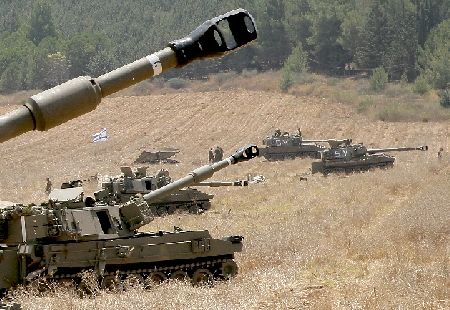 Israeli tanks firing at civilian targets in Lebanon, 2006 Salem-News.com photo by Dexter Phoenix |
New experiments demonstrated the effects on war. As civil war was raging in Lebanon, a group gathered nearby in Israel to practice long meditations. During their assembly, the intensity of fighting in Lebanon lessened and war deaths plummeted. In Israel, crime, traffic accidents, fires, and other indicators of social disorder decreased. All the changes were statistically highly significant.
A further experiment showed even more dramatic results. According to the ancient Vedic tradition, if a very large number of people meditate together, positive influences will occur globally. Maharishi decided to test this with seven thousand meditators, the square root of one percent of the world population. He gathered them together at the TM university in Fairfield, Iowa, for long meditations. The results thousands of miles away in Lebanon were a seventy-one percent decrease in war deaths, a sixty-eight percent decrease in injuries, a forty-eight percent decrease in combat incidents, and a sixty-six percent increase in cooperative efforts to end the civil war. A time-series analysis of the results confirmed the causation.
Groups of seven thousand meditators also reduce terrorism. During three of these large assemblies, worldwide terrorism dropped by an average of seventy-two percent as compared to all other weeks in a two-year period, based on data compiled by the Rand Corporation. Statistical analysis ruled out the possibility that the reduction was due to cycles, trends, seasonal changes, or drifts in the measures used.
Peer-reviewed studies of these experiments have been published in the Journal of Conflict Resolution, Journal of Mind and Behavior, Journal of Crime and Justice, Social Indicators Research, and other academic publications. Twenty-three studies based on fifty experiments document the long-distance effects of large groups of meditators in reducing violence and improving quality of life.
With this overwhelming evidence Maharishi approached the governments of the world and requested that they establish these groups on a permanent basis to secure peace and social harmony.
The governments of the world weren't interested.
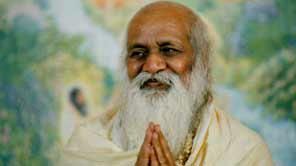 |
So Maharishi decided to build a long-term group. With the help of a wealthy donor he constructed a residential center in India and filled it with seven thousand meditators practicing several hours a day. The other experiments had been short-term, lasting a few weeks or months, but this one lasted two years ― a time that fundamentally changed the world. The Cold War ended, communism collapsed, the people of Eastern Europe and the Soviet Union freed themselves of totalitarian rule, the Berlin Wall came down, eighty nations signed an agreement that saved the ozone layer, black and white South Africans dismantled apartheid, hostile borders became open and friendly, former enemies signed arms reduction and nonaggression treaties. It was a period of unprecedented good will, a breakthrough for world peace.
But the donor ran out of money. He had already expended most of his fortune supporting the group and couldn't continue. Maharishi tried again to convince governments to take over the funding, an amount per year that was a fraction of what they spend on the military per one heartbeat.
Again, no government was interested. Why did they turn down such a scientifically verified program that would cost little, harm nothing, and possibly bring world peace?
In three of the countries that participated in the initial experiments, the governments were thrown out of office after the assemblies. Three dictators ― the Shah in Iran, Somoza in Nicaragua, and Marcos in the Philippines ― had invited the TM teachers because their populations were rising in rebellion. They hoped the meditating groups would act as a social tranquilizer that would pacify the rebels. The opposite turned out to be the case. The increased coherence generated by the groups enabled the whole society to join together and throw out the dictators with a minimum of violence. Other governments didn't want to risk losing power through a similar upsurge in the collective consciousness of their people.
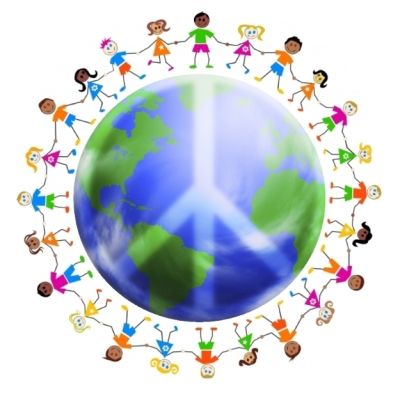
Another reason was that although many governments pay lip service to peace, they don't really want it. What they want is to use the military to control their people and enforce their aggressive foreign policies. They also profit from the arms trade; peace would be bad for business.
A third reason is that the concept of meditators being able to decrease violence half the world away is just too unconventional for most politicians to comprehend. It doesn't fit the worldview they've been educated into. Our society is still living in the shadow of nineteenth-century empiricism, where matter was seen as the basis of reality. Science has moved far beyond this position, but the old view still has a lingering effect on our thinking, causing us to reject what we don't understand. The insights of unified field physics are only slowly being absorbed by the general population. Most people can't yet comprehend that energy rather than matter is the basic component of the universe, and that this energy is identical with our own consciousness.
In addition, the intellectual rebellion against dogmatic religion has gone to the opposite extreme where many people now embrace skepticism as the ultimate wisdom. Doubt has become the new orthodoxy, and definitive statements about the world are automatically suspect.
Seeing consciousness as primary and matter as being manifested from it is a whole different way of looking at the universe and will require some getting used to. But every paradigm shift in human thinking has had to confront the prejudices of its time. As Arthur Schopenhauer said, a new worldview is first ridiculed, then attacked, and finally accepted as self-evident.
But unfortunately in the early 1990s when the group of seven thousand meditators had to be dissolved, negative consequences followed swiftly: The USA decided for full-spectrum dominance and developed new nuclear weapons; the first Gulf War broke out; Yugoslavia dissolved into violent chaos; terrorism multiplied. Destructive trends in all areas of life continue to engulf us.
Maharishi didn't give up, though. He started rebuilding the group on his own. To finance it, he raised the prices for learning TM and for his ayurvedic health programs. Although Maharishi died in 2008, there's currently a group of four thousand in India and two thousand in Iowa, both of them growing. If the number of meditators continues to increase, we could all be in for a new era.
Conscious Peace: World Peace Depends upon Our Collective Consciousness- is published in RADICAL PEACE: People Refusing War, which presents the first-person experiences of war resisters, deserters, and peace activists in the USA, Europe, Iraq, and Afghanistan. Recently released by Trine Day, it's a journey along diverse paths of nonviolence, the true stories of people working for peace in unconventional ways. Other chapters are posted on Salem-News.com and on a page of the publisher's website at http://media.trineday.com/
William T. Hathaway's other books include A WORLD OF HURT (Rinehart Foundation Award), CD-RING, and SUMMER SNOW. He is an adjunct professor of American studies at the University of Oldenburg in Germany. A selection of his writing is available at www.peacewriter.org.
Conscious Peace: World Peace Depends upon Our Collective Consciousness from the book
RADICAL PEACE: People Refusing War
By William T. Hathaway
Published by Trine Day 2010 William T. Hathaway is a Special Forces combat veteran turned peace activist. His other books include A WORLD OF HURT (Rinehart Foundation Award), CD-RING, and SUMMER SNOW. He is an adjunct professor of American studies at the University of Oldenburg in Germany. A selection of his writing is available at: www.peacewriter.org.
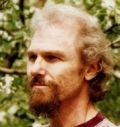 William T. Hathaway is author of the novels A World of Hurt, CD-Ring,, Summer Snow and a nonfiction book, Radical Peace: People Refusing War. He also wrote the screenplay for Socrates, an educational film starring Ed Asner that was broadcast on PBS.
William T. Hathaway is author of the novels A World of Hurt, CD-Ring,, Summer Snow and a nonfiction book, Radical Peace: People Refusing War. He also wrote the screenplay for Socrates, an educational film starring Ed Asner that was broadcast on PBS.
Hathaway began his writing career as a newspaper reporter in San Francisco, then joined the Special Forces to research a book about war. Based on his experiences on a combat team in Vietnam, A World of Hurt won a Rinehart Foundation Award for its portrayal of the psychological roots of war.
After the war Hathaway became a peace activist. In his latest book, Radical Peace, he wrote, "Since then my books and articles have centered on this theme, as do many of my nonwriting activities. It's become my beat, as they say in the newspaper business." A selection of his writing is available at http://www.peacewriter.org. You can drop William an email at this address: william.hathaway@ewetel.net
Articles for June 6, 2011 | Articles for June 7, 2011 | Articles for June 8, 2011
Quick Links
DINING
Willamette UniversityGoudy Commons Cafe
Dine on the Queen
Willamette Queen Sternwheeler
MUST SEE SALEM
Oregon Capitol ToursCapitol History Gateway
Willamette River Ride
Willamette Queen Sternwheeler
Historic Home Tours:
Deepwood Museum
The Bush House
Gaiety Hollow Garden
AUCTIONS - APPRAISALS
Auction Masters & AppraisalsCONSTRUCTION SERVICES
Roofing and ContractingSheridan, Ore.
ONLINE SHOPPING
Special Occasion DressesAdvertise with Salem-News
Contact:AdSales@Salem-News.com

googlec507860f6901db00.html



Terms of Service | Privacy Policy

All comments and messages are approved by people and self promotional links or unacceptable comments are denied.
Hazel June 9, 2011 11:20 am (Pacific time)
Meditation is simple. Just say to yourself "what will be my next thought". There will be no thought. That's meditation. Depending on your evolution thoughts may or may not come right back. Say it again. The more you do it the easier it is. The reward is when you don't need to try anymore and no thought is a natural state. Intelligence shines through. You have an inner teacher. That is all you need. Krishnamurti's book "The Awakening of Intelligence" is a gem.
TM Guy June 8, 2011 2:04 pm (Pacific time)
You can call 888-Learn TM to find out the info for the TM center nearest you.
Major Tom June 8, 2011 2:03 pm (Pacific time)
Wow! What a powerful and well told story. I can also attest to the great benefits of TM. It also had life changing effects on my life. After just a year of so of doing TM my whole life took a new and healthier direction. I quit smoking, quit drinking and my self esteem improved dramatically.
Colli June 8, 2011 11:15 am (Pacific time)
I was wondering if there was a list of instructors or schools, by region or state, where TM could be learned? Colli
[Return to Top]©2025 Salem-News.com. All opinions expressed in this article are those of the author and do not necessarily reflect those of Salem-News.com.